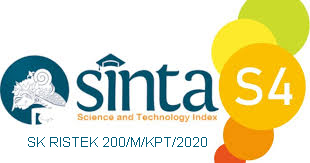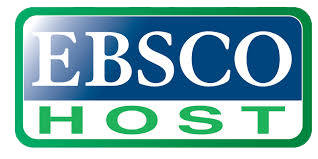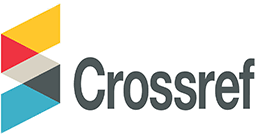Overview of Vehicle-to-Everything Communication: Technological Advancements, Applications, and Future Prospects in Intelligent Transportation Systems
Abstract
Vehicle-to-Everything (V2X) communication is a cornerstone technology in modern Intelligent Transportation Systems (ITS), enabling real-time data exchange between vehicles, infrastructure, pedestrians, and networks. V2X enhances road safety, traffic management, and driving experience, contributing to the global vision of connected and autonomous transportation. This paper presents a comprehensive overview of V2X communication, detailing its key components, types, and technological standards, including Dedicated Short-Range Communication (DSRC), LTE-V2X, and 5G. We explore current applications of V2X, such as safety enhancements, traffic optimization, infotainment, and environmental sustainability, and discuss significant challenges in deployment, including technical limitations, security and privacy concerns, and infrastructure requirements. Furthermore, this study examines future directions in V2X, emphasizing the role of 5G, edge computing, AI integration, and the implications for electric and autonomous vehicles. Realizing V2X's full potential requires robust policy support, international standardization, and infrastructure investments, particularly in countries with varying levels of technological maturity. This paper provides insights into the evolution of V2X and outlines critical considerations for advancing toward a safer, more efficient, and sustainable global transportation ecosystem
Keywords
Full Text:
PDFReferences
B. Fu, J. Ren, and G. Wang, “Dynamic Optimal Radio Resource Management Scheme for V2V,” Proc. - 2019 Int. Conf. Artif. Intell. Adv. Manuf. AIAM 2019, pp. 238–242, 2019, doi: 10.1109/AIAM48774.2019.00055.
M. D. Furtado, R. D. Mushrall, and H. Liu, “Threat Analysis of the Security Credential Management System for Vehicular Communications,” 2018 IEEE Int. Symp. Technol. Homel. Secur. HST 2018, 2018, doi: 10.1109/THS.2018.8574206.
Ketut Bayu Yogha Bintoro, S. D. H. Permana, and A. Syahputra, “V2V Communication in Smart Traffic Systems : Current Status , Challenges and Future Perspectives,” vol. 19, no. 1, pp. 21–31, 2024.
M. Rapelli, C. Casetti, and M. Sgarbi, “A Distributed V2V-Based Virtual Traffic Light System,” 2020 International Conference on COMmunication Systems & NETworkS (COMSNETS). IEEE, 2020. doi: 10.1109/comsnets48256.2020.9027339.
A. Ioana, A. Korodi, and I. Silea, “Automotive IoT Ethernet-Based Communication Technologies Applied in a V2X Context via a Multi-Protocol Gateway,” Sensors, vol. 22, no. 17, 2022, doi: 10.3390/s22176382.
L. Wang, “Performance analysis of EDCA for IEEE 802.11p/DSRC based V2V communication in discrete event system,” IEEE Vehicular Technology Conference, vol. 2017. pp. 1–5, 2018. doi: 10.1109/VTCFall.2017.8288272.
W. Albattah, S. Habib, M. F. Alsharekh, M. Islam, S. Albahli, and D. A. Dewi, “An Overview of the Current Challenges, Trends, and Protocols in the Field of Vehicular Communication,” Electron., vol. 11, no. 21, 2022, doi: 10.3390/electronics11213581.
E. Uhlemann, “The US and Europe Advances V2V Deployment [Connected Vehicles],” IEEE Veh. Technol. Mag., vol. 12, no. 2, pp. 18–22, 2017, doi: 10.1109/MVT.2017.2680660.
A. T. Sasongko, G. Jati, B. Hardian, and W. Jatmiko, “The reliability of routing protocols as an important factor for road safety applications in VANET-based autonomous cars,” J. Comput. Sci., vol. 16, no. 6, pp. 768–783, 2020, doi: 10.3844/JCSSP.2020.768.783.
A. B. Nkoro and Y. A. Vershinin, “Current and future trends in applications of Intelligent Transport Systems on cars and infrastructure,” 2014 17th IEEE Int. Conf. Intell. Transp. Syst. ITSC 2014, pp. 514–519, 2014, doi: 10.1109/ITSC.2014.6957741.
X. Liu, “Congestion control in V2V safety communication: Problem, analysis, approaches,” Electron., vol. 8, no. 5, 2019, doi: 10.3390/electronics8050540.
F. Goudarzi, H. Asgari, and H. S. Al-Raweshidy, “Traffic-aware VANET routing for city environments-a protocol based on ant colony optimization,” IEEE Syst. J., vol. 13, no. 1, pp. 571–581, 2019, doi: 10.1109/JSYST.2018.2806996.
P. K. Singh, S. K. Nandi, and S. Nandi, “A tutorial survey on vehicular communication state of the art, and future research directions,” Veh. Commun., vol. 18, p. 100164, 2019, doi: 10.1016/j.vehcom.2019.100164.
A. Molina-Galan, B. Coll-Perales, and J. Gozalvez, “C-V2X Assisted mmWave V2V Scheduling,” 2019 IEEE 2nd Connected and Automated Vehicles Symposium (CAVS). IEEE, 2019. doi: 10.1109/cavs.2019.8887840.
M. Gupta, J. Benson, F. Patwa, and R. Sandhu, “Secure V2V and V2I Communication in Intelligent Transportation using Cloudlets,” IEEE Trans. Serv. Comput., vol. 1374, no. c, pp. 1–1, 2020, doi: 10.1109/tsc.2020.3025993.
S. A. Ahmad and M. Shcherbakov, “A survey on routing protocols in vehicular ad hoc networks,” 2018 9th Int. Conf. Information, Intell. Syst. Appl. IISA 2018, 2019, doi: 10.1109/IISA.2018.8633700.
M. Muhammad and G. A. Safdar, “5G-based V2V broadcast communications: A security perspective,” Array, vol. 11, p. 100084, 2021, doi: 10.1016/j.array.2021.100084.
Y. Li and C. He, “Connected Autonomous Vehicle Platoon Control Considering Vehicle Dynamic Information,” Chinese Control Conf. CCC, vol. 2018-July, pp. 7834–7839, 2018, doi: 10.23919/ChiCC.2018.8483514.
A. Daniel, A. Paul, A. Ahmad, and S. Rho, “Cooperative Intelligence of Vehicles for Intelligent Transportation Systems (ITS),” Wirel. Pers. Commun., vol. 87, no. 2, pp. 461–484, 2016, doi: 10.1007/s11277-015-3078-7.
M. M. Hamdi, L. Audah, S. A. Rashid, A. H. Mohammed, S. Alani, and A. S. Mustafa, “A Review of Applications, Characteristics and Challenges in Vehicular Ad Hoc Networks (VANETs),” HORA 2020 - 2nd Int. Congr. Human-Computer Interact. Optim. Robot. Appl. Proc., 2020, doi: 10.1109/HORA49412.2020.9152928.
M. Benza et al., “Intelligent Transport Systems (ITS) applications on dangerous good transport on road in Italy,” Proc. - 2012 7th Int. Conf. Syst. Syst. Eng. SoSE 2012, pp. 223–228, 2012, doi: 10.1109/SYSoSE.2012.6384180.
D. Tian, H. Luo, J. Zhou, Y. Wang, G. Yu, and H. Xia, “A self-adaptive V2V communication system with DSRC,” Proc. - 2013 IEEE Int. Conf. Green Comput. Commun. IEEE Internet Things IEEE Cyber, Phys. Soc. Comput. GreenCom-iThings-CPSCom 2013, pp. 1528–1532, 2013, doi: 10.1109/GreenCom-iThings-CPSCom.2013.271.
M. N. Tahir and M. Katz, “Performance evaluation of IEEE 802.11p, LTE and 5G in connected vehicles for cooperative awareness,” Eng. Reports, vol. 4, no. 4, pp. 1–14, 2022, doi: 10.1002/eng2.12467.
S. Ali, “Vehicle to Vehicle communication,” 2019, doi: 10.13140/RG.2.2.24951.88487.
D. Li, M. Liu, F. Zhao, and Y. Liu, “Challenges and countermeasures of interaction in autonomous vehicles,” Sci. China Inf. Sci., vol. 62, no. 5, pp. 3–5, 2019, doi: 10.1007/s11432-018-9766-3.
K. Fukuda, “Science, technology and innovation ecosystem transformation toward society 5.0,” Int. J. Prod. Econ., vol. 220, no. August 2017, p. 107460, 2020, doi: 10.1016/j.ijpe.2019.07.033.
J. Li, Y. Zhang, M. Shi, Q. Liu, and Y. Chen, “Collision avoidance strategy supported by LTE-V-based vehicle automation and communication systems for car following,” Tsinghua Sci. Technol., vol. 25, no. 1, pp. 127–139, 2020, doi: 10.26599/TST.2018.9010143.
N. G. Ghatwai, V. K. Harpale, and M. Kale, “Vehicle To vehicle communication for crash avoidance system,” Proc. - 2nd Int. Conf. Comput. Commun. Control Autom. ICCUBEA 2016, pp. 1–3, 2017, doi: 10.1109/ICCUBEA.2016.7860118.
H. Xu, Y. Zhang, C. G. Cassandras, L. Li, and S. Feng, “A bi-level cooperative driving strategy allowing lane changes,” Transp. Res. Part C Emerg. Technol., vol. 120, no. December 2019, 2020, doi: 10.1016/j.trc.2020.102773.
S. islam Bouderba and N. Moussa, “Impact of green wave traffic light system on V2V communications,” 2018 6th International Conference on Wireless Networks and Mobile Communications (WINCOM). IEEE, 2018. doi: 10.1109/wincom.2018.8629638.
Z. Sun, T. Huang, and P. Zhang, “Cooperative decision-making for mixed traffic: A ramp merging example,” Transp. Res. Part C Emerg. Technol., vol. 120, no. January, p. 102764, 2020, doi: 10.1016/j.trc.2020.102764.
R. I. Meneguette, G. P. R. Filho, D. L. Guidoni, G. Pessin, L. A. Villas, and J. Ueyama, “Increasing intelligence in inter-vehicle communications to reduce traffic congestions: Experiments in Urban and highway environments,” PLoS One, vol. 11, no. 8, pp. 1–26, 2016, doi: 10.1371/journal.pone.0159110.
C. Cho and S. Ahn, “Efficient Maintenance of AODV Routes in the Vehicular Communication Environment with Sparsely Placed Road Side Units,” Mob. Inf. Syst., vol. 2018, 2018, doi: 10.1155/2018/6252907.
S. Zhao and K. Zhang, “A distributionally robust stochastic optimization-based model predictive control with distributionally robust chance constraints for cooperative adaptive cruise control under uncertain traffic conditions,” Transp. Res. Part B Methodol., vol. 138, pp. 144–178, 2020, doi: 10.1016/j.trb.2020.05.001.
Q. Xin, R. Fu, W. Yuan, Q. Liu, and S. Yu, “Predictive intelligent driver model for eco-driving using upcoming traffic signal information,” Phys. A Stat. Mech. its Appl., vol. 508, pp. 806–823, 2018, doi: 10.1016/j.physa.2018.05.138.
L. F. Abanto-Leon, A. Koppelaar, and S. Heemstra De Groot, “Network-assisted resource allocation with quality and conflict constraints for V2V communications,” IEEE Veh. Technol. Conf., vol. 2018-June, pp. 1–5, 2018, doi: 10.1109/VTCSpring.2018.8417745.
J. Guanetti, Y. Kim, and F. Borrelli, “Control of connected and automated vehicles: State of the art and future challenges,” Annu. Rev. Control, vol. 45, no. March, pp. 18–40, 2018, doi: 10.1016/j.arcontrol.2018.04.011.
F. Benedetto, A. Calvi, F. D’Amico, and G. Giunta, “Applying telecommunications methodology to road safety for rear-end collision avoidance,” Transp. Res. Part C Emerg. Technol., vol. 50, pp. 150–159, 2015, doi: 10.1016/j.trc.2014.07.008.
ETSI EN 302 890-1, “Intelligent Transport Systems (ITS); Facilities layer function; Part 1: Services Announcement (SA) specification,” Etsi, vol. 1, pp. 1–19, 2019.
E. Talavera, A. Diaz Alvarez, and J. E. Naranjo, “A Review of Security Aspects in Vehicular Ad-Hoc Networks,” IEEE Access, vol. 7, pp. 41981–41988, 2019, doi: 10.1109/ACCESS.2019.2907861.
M. Garai and N. Boudriga, “A secure QoS aware VANET,” 2016 Int. Conf. Adv. Commun. Syst. Inf. Secur. ACOSIS 2016 - Proc., 2017, doi: 10.1109/ACOSIS.2016.7843919.
M. Oche, A. B. Tambuwal, C. Chemebe, R. M. Noor, and S. Distefano, VANETs QoS-based routing protocols based on multi-constrained ability to support ITS infotainment services, vol. 26, no. 3. Springer US, 2020. doi: 10.1007/s11276-018-1860-7.
J. Zhao, Y. Chen, and Y. Gong, “Study of connectivity probability of vehicle-to-vehicle and vehicle-to-infrastructure communication systems,” IEEE Veh. Technol. Conf., vol. 2016-July, pp. 1–4, 2016, doi: 10.1109/VTCSpring.2016.7504493.
A. Khalifa, O. Kermorgant, S. Dominguez, and P. Martinet, “Vehicles platooning in urban environments: Integrated consensus-based longitudinal control with gap closure maneuvering and collision avoidance capabilities,” 2019 18th Eur. Control Conf. ECC 2019, pp. 1695–1701, 2019, doi: 10.23919/ECC.2019.8795940.
T. Zhu and Z. Liu, “Intelligent Transport Systems in China: Past, Present and Future,” Proc. - 2015 7th Int. Conf. Meas. Technol. Mechatronics Autom. ICMTMA 2015, pp. 581–584, 2015, doi: 10.1109/ICMTMA.2015.146.
I. Wahid, A. A. Ikram, M. Ahmad, S. Ali, and A. Ali, “State of the Art Routing Protocols in VANETs: A Review,” Procedia Comput. Sci., vol. 130, pp. 689–694, 2018, doi: 10.1016/j.procs.2018.04.121.
I. C. Chang, Y. F. Wang, and C. F. Chou, “Efficient VANET unicast routing using historical and real-time traffic information,” Proc. Int. Conf. Parallel Distrib. Syst. - ICPADS, pp. 458–464, 2011, doi: 10.1109/ICPADS.2011.57.
I. Malygin, V. Komashinsky, and V. V. Tsyganov, “International experience and multimodal intelligent transportation system of Russia,” Proc. 2017 10th Int. Conf. Manag. Large-Scale Syst. Dev. MLSD 2017, pp. 1–5, 2017, doi: 10.1109/MLSD.2017.8109658.
DOI: https://doi.org/10.31326/jisa.v8i1.2187
Refbacks
- There are currently no refbacks.
Copyright (c) 2025 Ketut Bayu Yogha Bintoro

This work is licensed under a Creative Commons Attribution-ShareAlike 4.0 International License.
JOURNAL IDENTITY
Journal Name: JISA (Jurnal Informatika dan Sains)
e-ISSN: 2614-8404, p-ISSN: 2776-3234
Publisher: Program Studi Teknik Informatika Universitas Trilogi
Publication Schedule: June and December
Language: English
APC: The Journal Charges Fees for Publishing
Indexing: EBSCO , DOAJ, Google Scholar, Arsip Relawan Jurnal Indonesia, Directory of Research Journals Indexing, Index Copernicus International, PKP Index, Science and Technology Index (SINTA, S4) , Garuda Index
OAI address: http://trilogi.ac.id/journal/ks/index.php/JISA/oai
Contact: jisa@trilogi.ac.id
Sponsored by: DOI – Digital Object Identifier Crossref, Universitas Trilogi
In Collaboration With: Indonesian Artificial Intelligent Ecosystem(IAIE), Relawan Jurnal Indonesia, Jurnal Teknologi dan Sistem Komputer (JTSiskom)
JISA (Jurnal Informatika dan Sains) is Published by Program Studi Teknik Informatika, Universitas Trilogi under Creative Commons Attribution-ShareAlike 4.0 International License.


















